By Alex Trukan
Combination play has been an important aspect in soccer coaching for many years. There are several ways it can be defined and then created during the game. One of the elements contributing to it are ‘wall passes’, an attacking combination based on quick passing movement between two or three players, in which the ball is returned on the backwards or sideways angles. It is a great way of progressing forwards as well as creating overloads around the ball. Apart from the element of speed, it is based on highly technical attributes such as the quality of pass and movement off the ball. It can be used in all areas of the pitch but it has the biggest benefits in the middle and final thirds, especially in and around the opposition penalty box. It can be also very advantageous when counter-attacking or playing away from pressure.
First element of an effective wall pass is the starting position of the target player. It should allow him to get to the ball before the defender and make an accurate angled pass using one or if needed more touches. The passer of the ball, should in turn make a forward supporting run to be able to use the space between the opposition players. Pace of that run is crucial. The run should start before the ball arrives at the destination. That will help to create advantageous position over the defender.
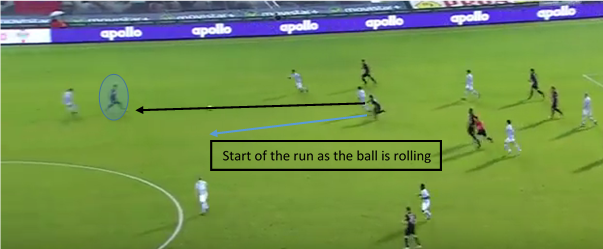
The supporting run should be made on the angle allowing the attacker to play around the defenders into a pocket of space created. That will also make it more difficult to defend by the opposition as the defender’s way to the ball will be longer.
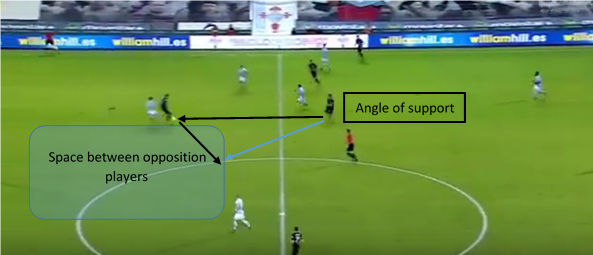
At times, the pass back should be delayed due to the lack of immediate support or late run of the passer. Also in some situations, the pass back won’t be possible due to opposition players around the ball blocking the passing lines. In those situation, the receiver should be able to hold the ball and try to turn or wait for support to arrive. It is important that players understand that sometimes it won’t be on to pass the ball back straight away and, therefore they should be ready to apply different solutions.
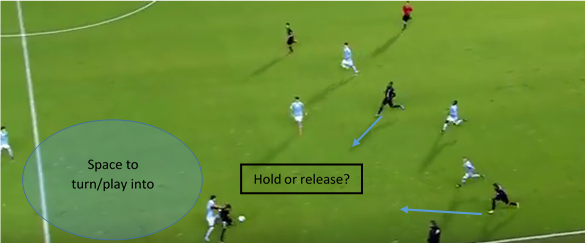
Wall passes can be also used diagonally to play around the players in tight situations. That is especially popular in the middle third of the pitch where they help the midfielders to create different angle to play forwards or relief pressure on the ball.
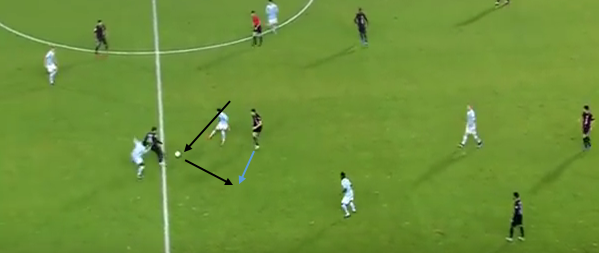
Another modification of a traditional wall pass might be the use of a third player. In this case the second ball is not passed to the initial passer but another player that joins the combination. It can be a very unpredictable variation that often helps to unbalance the opposition.
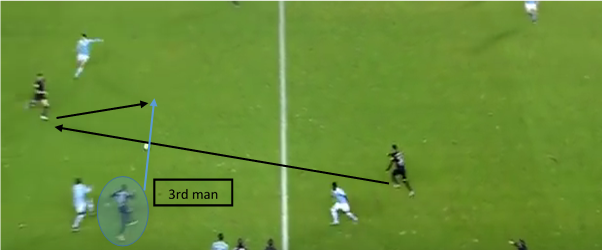
It is crucial to bear in mind that wall pass is one of the solutions to a problem in which the receiver is marked and can’t go forwards. Therefore, if the opportunity to turn arises straight away, a player should be able to recognise that it’s on to go forwards without going back.
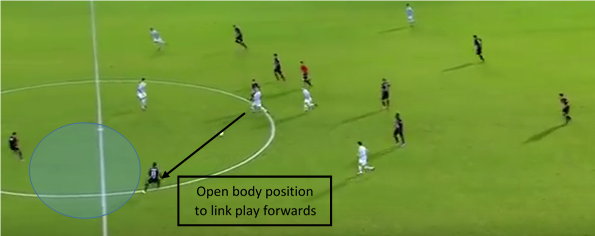
When coaching the use of wall passes and combination play, several patterns of play can be applied, but at the same time, coaches should be mindful of players’ own creativity and how an option of leaving the combinations up to players can affect their effectiveness.
By Alex Trukan, Development Coach, Nottingham Forest
@AlexTrukan


